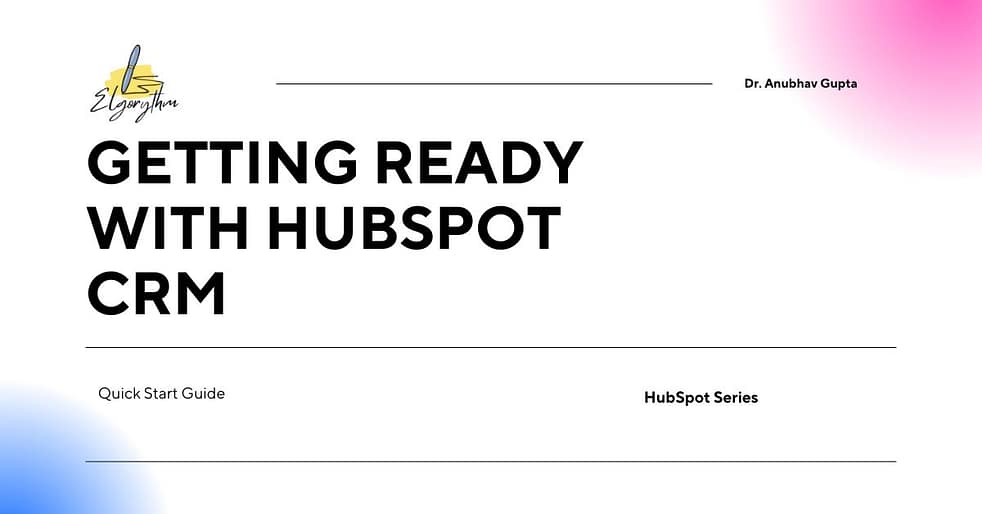Prioritizing leads is the fastest way to improve sales efficiency and shorten cycles. This guide shows how to design and validate a score model, implements lead scoring in HubSpot, and explains lead scoring best practices you can apply immediately. You’ll also get templates and a short FAQ with operational advice on how to set up lead scoring in hubspot.
Why lead scoring matters in Hubspot CRM?
Lead scores convert a set of behaviours and attributes into a single number your sales team can act on. Models that combine behavioural (what people do) and firmographic/demographic (who they are) signals tend to outperform simplistic approaches — academic reviews and vendor case studies both show measurable conversion improvements when scoring is used correctly. PMC
In practice, lead scoring in HubSpot gives you two advantages: (1) it surfaces the small number of leads most likely to convert, and (2) it creates a measurable handoff point (an SLA) between marketing and sales so teams know when to act. HubSpot’s own resources and customer case studies show the value of formalized scoring, routing and follow-up processes for improving lead quality and conversion. HubSpotHubSpot Blog

Core model: fit + engagement
A reliable approach separates two core dimensions:
- Fit — firmographic/demographic attributes: company size, industry, title/role, revenue band.
- Engagement — behavioural signals: demo requests, pricing page views, repeated visits, webinar attendance, email clicks.
When you implement lead scoring in HubSpot, store fit score and engagement score as separate properties, then create a composite score for routing and reporting. This separation makes the model auditable and helps you answer whether a high score comes from good fit or strong engagement.
Step-by-step: how to set up lead scoring in HubSpot
- Clean and inventory your data. Fix duplicate contacts, normalize job titles and company-size buckets, and confirm source attribution.
- Define your fit rules. Map company and role attributes to points (e.g., enterprise +15, mid-market +8, SMB +3).
- Map engagement events and weights. Prioritise bottom-funnel actions: demo request (+30), pricing page (+15), webinar attended (+8).
- Create properties. Add numeric properties for fit_score, engagement_score and composite_score in HubSpot. (Note: check your HubSpot edition and property options in the UI.) HubSpot Knowledge Base
- Implement scoring logic. Use workflows or the scoring tool to add/subtract points when actions happen. Include negative scores for disqualifiers (e.g., competitor domains, unsubscribed).
- Set routing thresholds. Automate owner assignment and notifications when composite_score reaches a defined SLA.
- Test on historical data. Run the model retrospectively to validate which score ranges correlate with past closed-won deals. Tweak weights based on results.
- Monitor & iterate. Score models change over time — treat scoring as an iterative process and schedule quarterly reviews.
Example
A B2B SaaS vendor set:
- Fit: enterprise +15, mid-market +8, SMB +3
- Engagement: demo request +30, pricing page +15, repeated visits +8
- Negative: competitor domain −50, unsubscribed −100
They set the handoff threshold at 50 points. After two months of live routing and minor tuning, sales-accepted-rate for routed leads rose by ~20% — a typical improvement when teams apply lead scoring best practices and align on thresholds. (Use your historical closed-won to calibrate these numbers for your business.)

Lead scoring best practices
- Combine fit + engagement. Store them separately to diagnose what drives the score.
- Use negative scores. Penalize clear disqualifiers so sales doesn’t waste time.
- Start conservative. Model with historical data and test weights before broad activation.
- Document governance. Owner, naming convention, SLA, and rollback plans are essential. HubSpot Academy covers practical lead scoring and routing patterns you can adopt. HubSpot Academy
- Implement decay. Reduce engagement points over time for inactive leads.
- A/B test thresholds. Don’t assume one threshold fits all campaigns or segments.
Templates & quick plays you can paste into HubSpot
Demo-first (SaaS)
- If page_view = /pricing OR form = demo_request, increment engagement_score by 15–30 and log a task for follow-up. Assign owner when composite_score > threshold.
Content-nurture
- Tier content downloads: bottom-funnel content +10–15, top-of-funnel +2–4. Add decay after 90 days and re-evaluate quarterly.
Both templates reflect core lead scoring best practices: measurable, auditable, and conservative starting weights.
Monitoring and KPIs
Essential dashboards: leads by score band, conversion rate by score, average deal size by score, and time-to-contact after handoff. Use the dashboards to ask: do the highest score bands convert materially better? That question is the clearest test of whether your lead scoring in HubSpot is predictive and useful.
Advanced options
- Predictive scoring / ML: If you have several thousand closed deals, try predictive scoring tools (HubSpot and third parties) to identify hidden signals.
- Account-level scoring (ABM): Aggregate contact scores to create account scores and prioritise multi-stakeholder accounts.
- Micro-workflows: Use small, reusable workflows to add points and call sub-workflows for routing — easier to test and maintain.
Common pitfalls
- Arbitrary weights without historical validation.
- Forgetting negative scores for disqualifiers.
- Not documenting or training sales on score meaning — if sales doesn’t trust scores, adoption will fail. These are the exact failures avoided by applying lead scoring best practices.
FAQs
Q: How do I pick an initial threshold?
A: Model on past closed-won leads: run the scoring logic on historical records and see which score ranges are overrepresented among closed-won deals. Use that range as a starting threshold and iterate.
Q: Can I use lead scoring in HubSpot for ABM?
A: Yes — roll up contact scores to an account-level aggregate to prioritise accounts with multiple engaged stakeholders.
Q: How often should I review my scoring model?
A: Quarterly at a minimum, or immediately after pricing/product/ICP shifts.
Q: Will predictive scoring replace manual rules?
A: Predictive scoring can complement manual rules but often works best when used in tandem — predictive models can suggest weightings you then validate with human logic.Q: Where can I learn how to set up lead scoring in hubspot step-by-step?
A: HubSpot Academy and the HubSpot Knowledge Base include detailed lessons and walkthroughs for configuring scoring properties and workflows. HubSpot AcademyHubSpot Knowledge Base
Closing note
Setting up lead scoring in HubSpot is a practical, measurable way to prioritize the best prospects and increase conversion efficiency. Start with a simple fit + engagement model, validate against closed-won history, automate routing, and maintain governance — and you’ll turn your CRM into a real pipeline engine.



